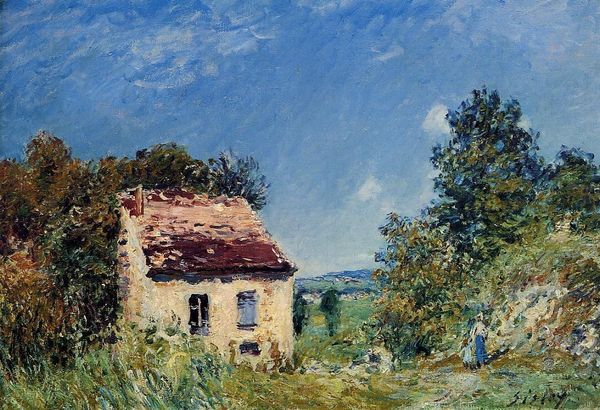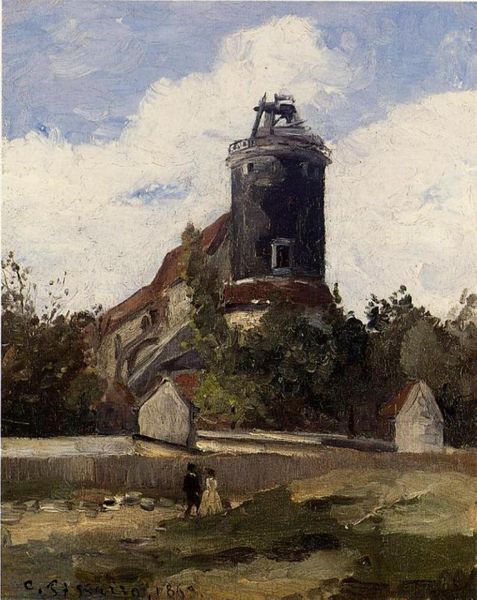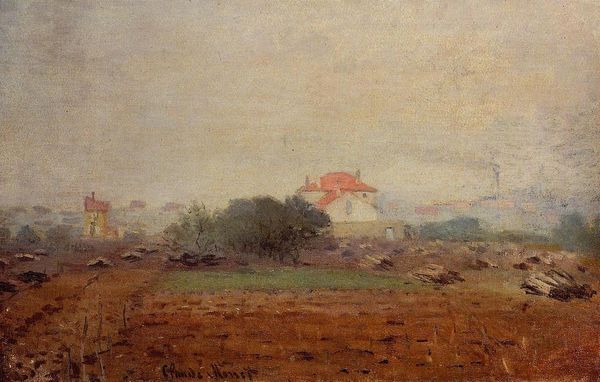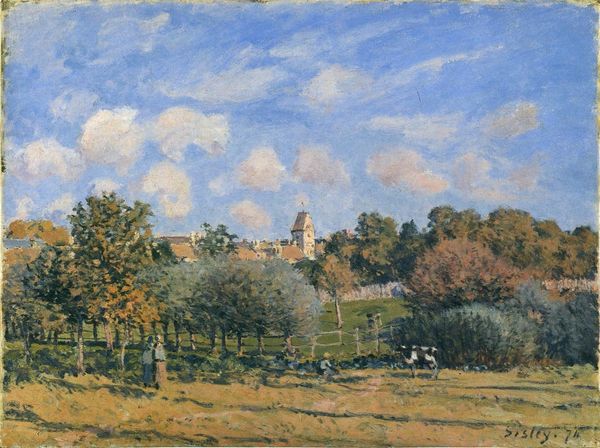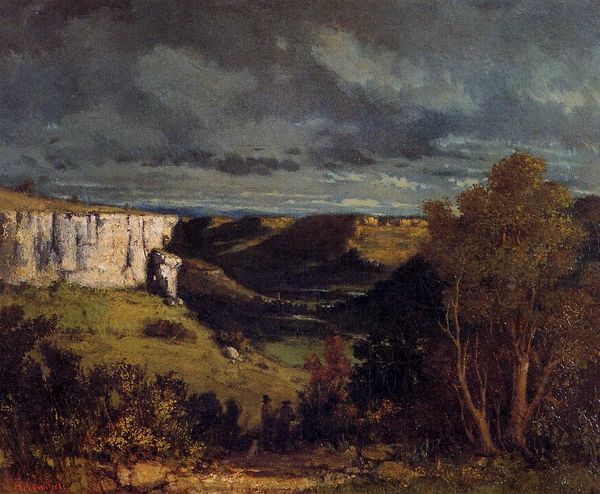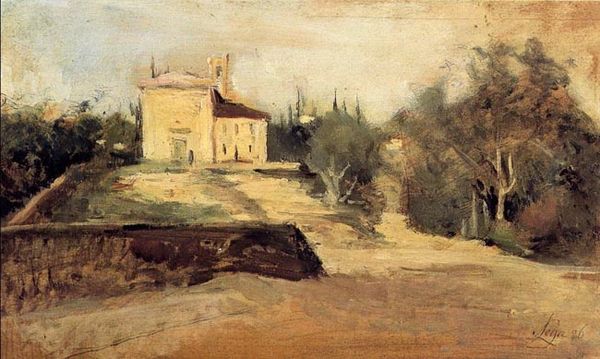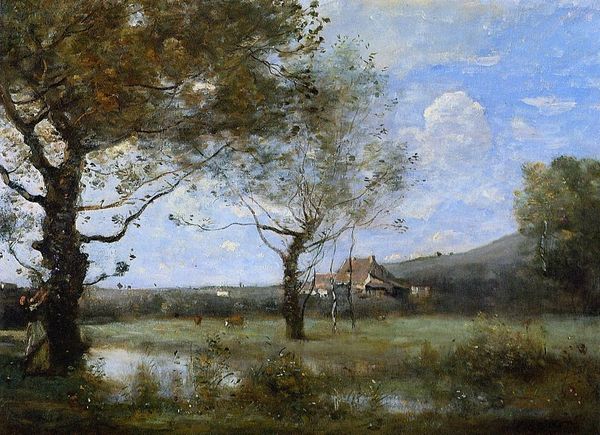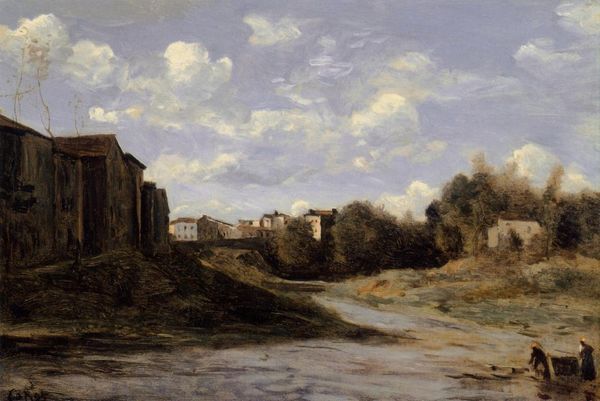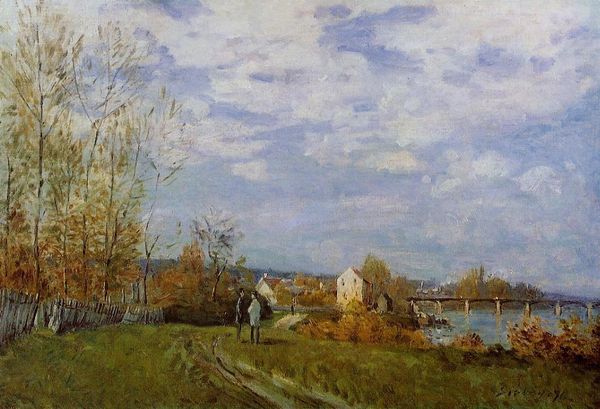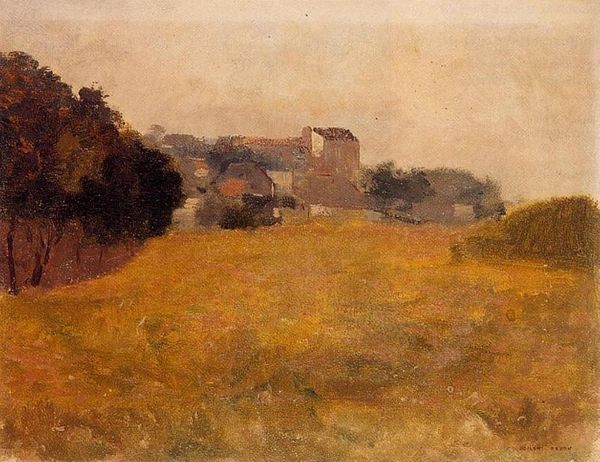
Copyright: Public domain
Editor: So, this is *Deauville, Ruins of the Chateau de Lassay*, painted in 1893 by Eugène Boudin. It’s an oil painting. There’s something really melancholic about the scene, this grand ruin in the middle of the landscape. What jumps out at you? Curator: Melancholic is spot on, though I’d say there’s also a whisper of hope hanging in the air, wouldn't you agree? See how Boudin, working *en plein air*, captures the light almost caressing the ruined stone? The building is crumbling, yes, but that golden light transforms it and suggests a rebirth is possible. The ordinary life moving on, too... flock of sheep and what looks like herders nearby the ruin... they represent eternity. Do you notice anything in the brushstrokes? Editor: The brushwork seems pretty loose, kind of like sketches. I feel like I could almost reach out and touch the rough texture of the crumbling walls. Curator: Exactly. Boudin isn’t just documenting a historical site; he’s inviting us to feel the passage of time. These fleeting, broken strokes… it’s about the impermanence of everything, the fleeting beauty of the present moment against the backdrop of history. Does the pastoral scene and building style trigger any other thoughts or feelings? Editor: I can see how it echoes romanticism, with its dramatic ruins. Though the painting is very Impressionistic at the same time… Curator: Beautifully said! Boudin really was walking the line between Romanticism’s grand historical themes and Impressionism's fleeting present. It makes for a poignant mix, doesn't it? A tangible story about nature reclaiming what time has weathered. Editor: Definitely. I walked in thinking, "ruins equal sadness", but it is also about endurance and rebirth, so it is more of a mixed feeling! Curator: Art always surprises us when we approach it openly. Always.
Comments
No comments
Be the first to comment and join the conversation on the ultimate creative platform.
